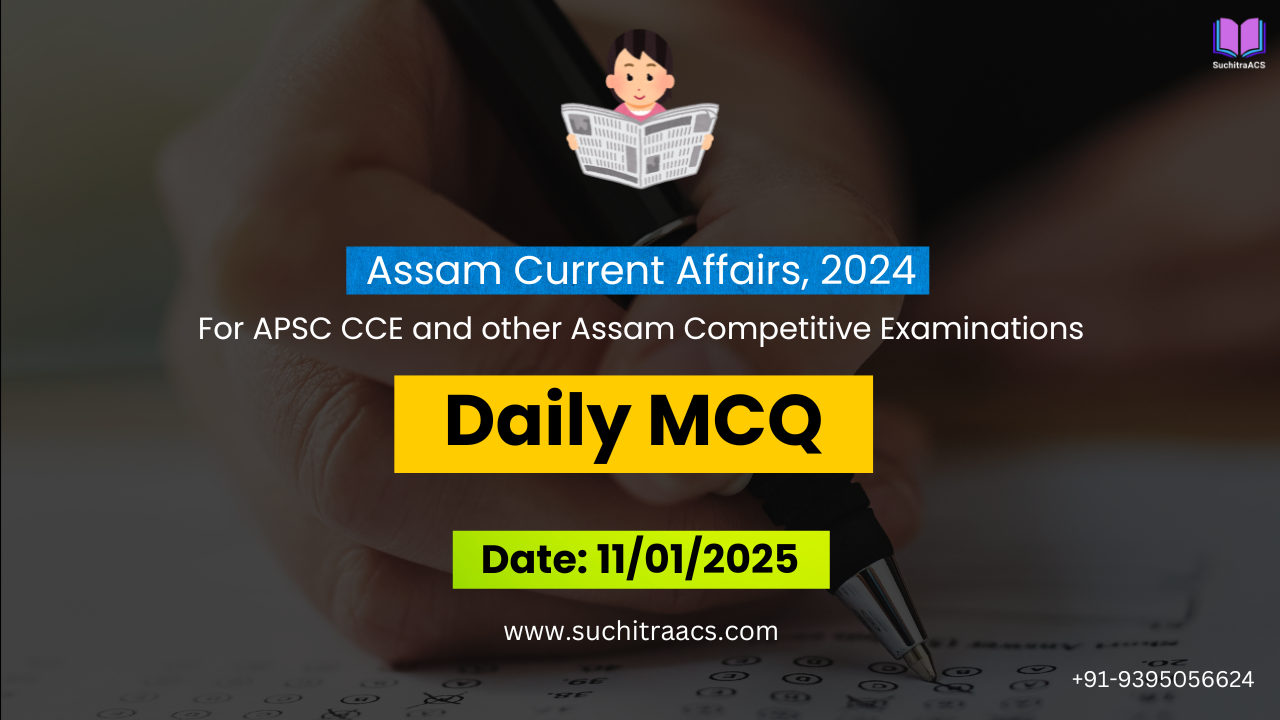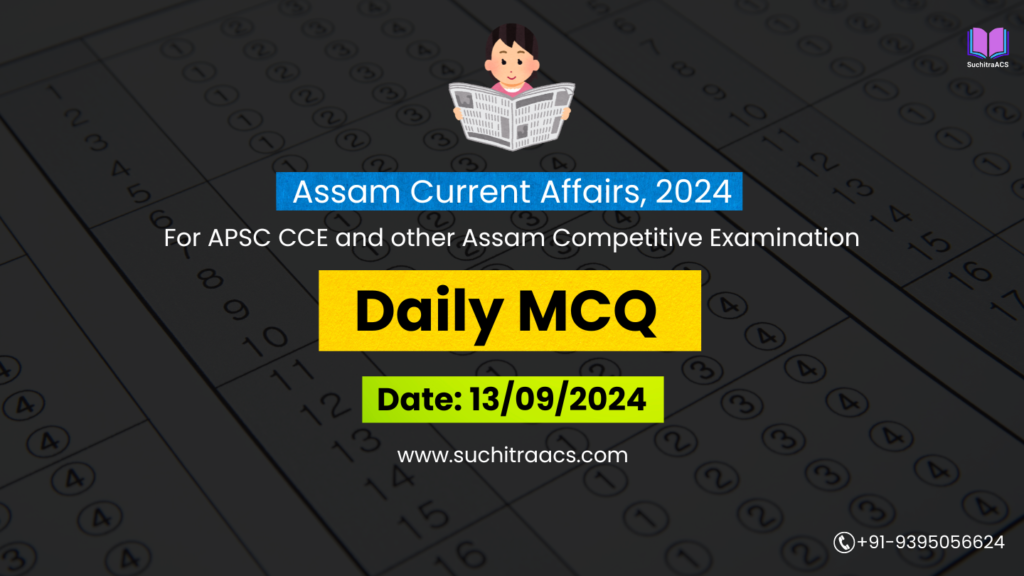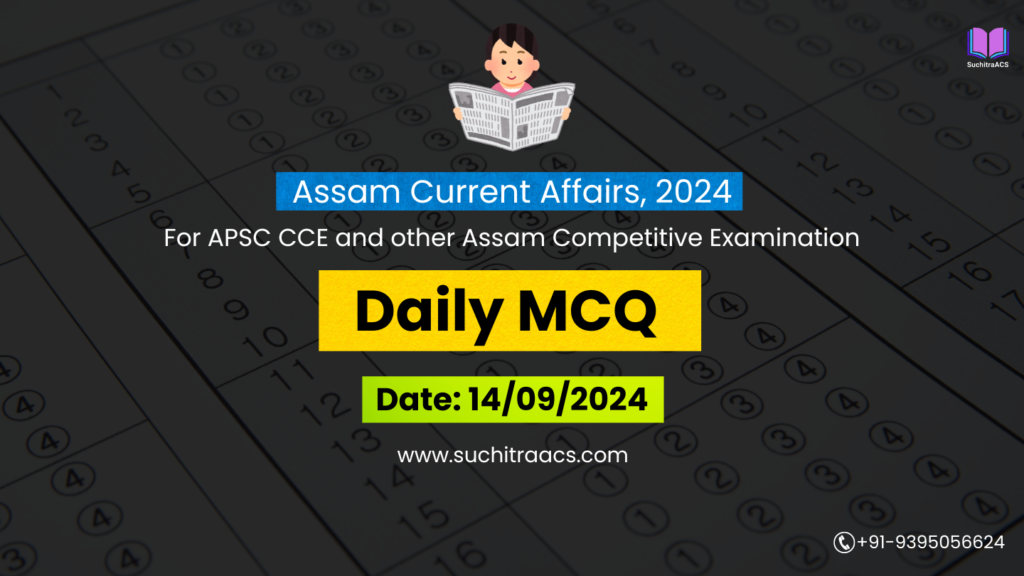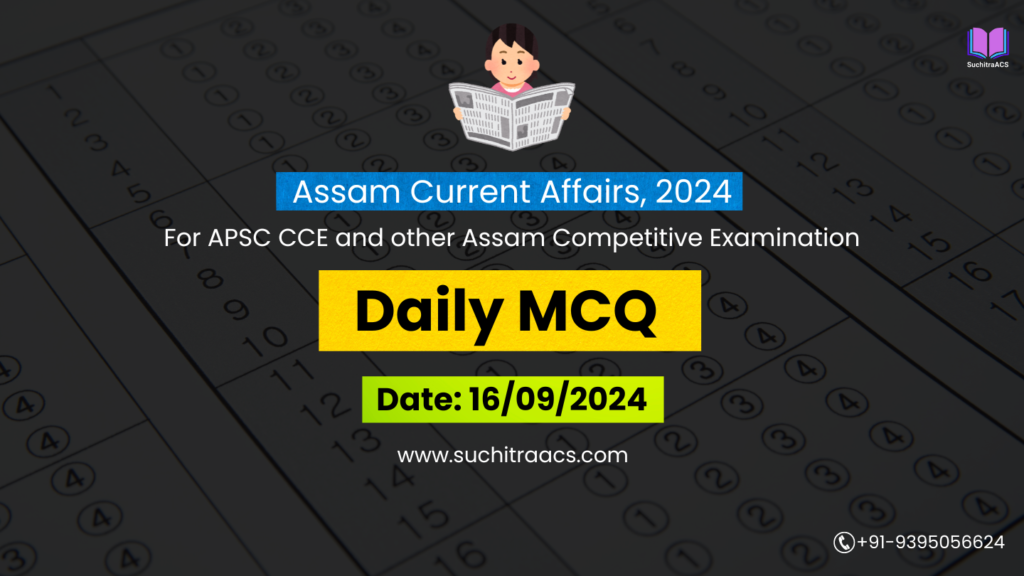APSC MCQs / APSC Prelims Practice Questions based on Assam Tribune (Daily) – 11/01/2025
For APSC CCE and other Assam Competitive examinations aspirants, practicing Daily MCQs is vital. This blog covers most important Prelims questions from the Assam Tribune today (11-01-2025). These issues are key for both APSC Prelims syllabus, offering insights into the important topics of current affairs.
APSC MCQs / APSC Prelims Practice Questions (Date: 11/01/2025)
1. Deepor Beel Bird Census 2025
Q1. Which of the following is NOT a globally threatened species recorded in Deepor Beel?
- (a) Spot-Billed Pelican
- (b) Lesser Adjutant Stork
- (c) Great Indian Bustard
- (d) Baer’s Pochard
Answer: (c)
Explanation: The Great Indian Bustard is critically endangered but is not found in Deepor Beel. Other species mentioned are observed in the census.
Q2. What is the primary methodology used in the Asian Water Bird Census (AWC)?
- (a) Satellite Imagery
- (b) Visual Encounter Survey
- (c) Acoustic Sampling
- (d) Camera Trapping
Answer: (b)
Explanation: The AWC utilizes visual encounter survey methodology, which involves direct observation of bird populations.
2. Indian Knowledge System (IKS) and NEP 2020 Integration
Q3. Which institution is leading the Indian Knowledge System (IKS) initiative under NEP 2020?
- (a) NITI Aayog
- (b) Ministry of Culture
- (c) AICTE
- (d) UGC
Answer: (c)
Explanation: AICTE (All India Council for Technical Education) spearheads the Indian Knowledge System initiative to integrate traditional knowledge with modern education.
Q4. Gauhati University’s Indian Knowledge System collection includes manuscripts primarily on which topics?
- (a) Space Exploration and Astronomy
- (b) Ayurveda, Epics, and Grammar
- (c) Western Philosophy and Modern Science
- (d) Textile Engineering and Metallurgy
Answer: (b)
Explanation: The manuscripts cover traditional knowledge areas like Ayurveda, Vedas, Puranas, and grammar, highlighting India’s cultural heritage.
3. Inland Waterways Development in Assam
Q5. National Waterway 2 (NW-2) covers which river in Assam?
- (a) Barak River
- (b) Lohit River
- (c) Brahmaputra River
- (d) Subansiri River
Answer: (c)
Explanation: NW-2 covers the Brahmaputra River, stretching from Dhubri to Sadiya, a critical waterway for Assam’s connectivity.
Q6. Which of the following is NOT a key objective of inland waterway development in Assam?
- (a) Reducing transportation costs
- (b) Promoting eco-tourism
- (c) Enhancing flood control measures
- (d) Improving connectivity under the Act East Policy
Answer: (c)
Explanation: While inland waterways help in transportation and eco-tourism, flood control is not their direct objective.
4. Empowering Tribal Families through Pattal-Making Machines
Q7. Pattal plates, distributed under NABARD’s initiative, are primarily made of:
- (a) Bamboo
- (b) Plastic
- (c) Areca Nut Leaves
- (d) Dried Leaves
Answer: (d)
Explanation: Pattals are traditionally made from dried leaves, offering an eco-friendly alternative to disposables.
Q8. NABARD’s Tribal Development Fund focuses on:
- (a) Large-scale industrial projects in tribal areas
- (b) Urban development in tribal communities
- (c) Promoting sustainable livelihoods for tribal populations
- (d) Providing interest-free loans for all sectors
Answer: (c)
Explanation: The Tribal Development Fund aims to support sustainable livelihood projects for tribal populations, enhancing their socio-economic status.
 APSC Prelims Crash Course, 2025
APSC Prelims Crash Course, 2025
at most affordable rate in Assam!
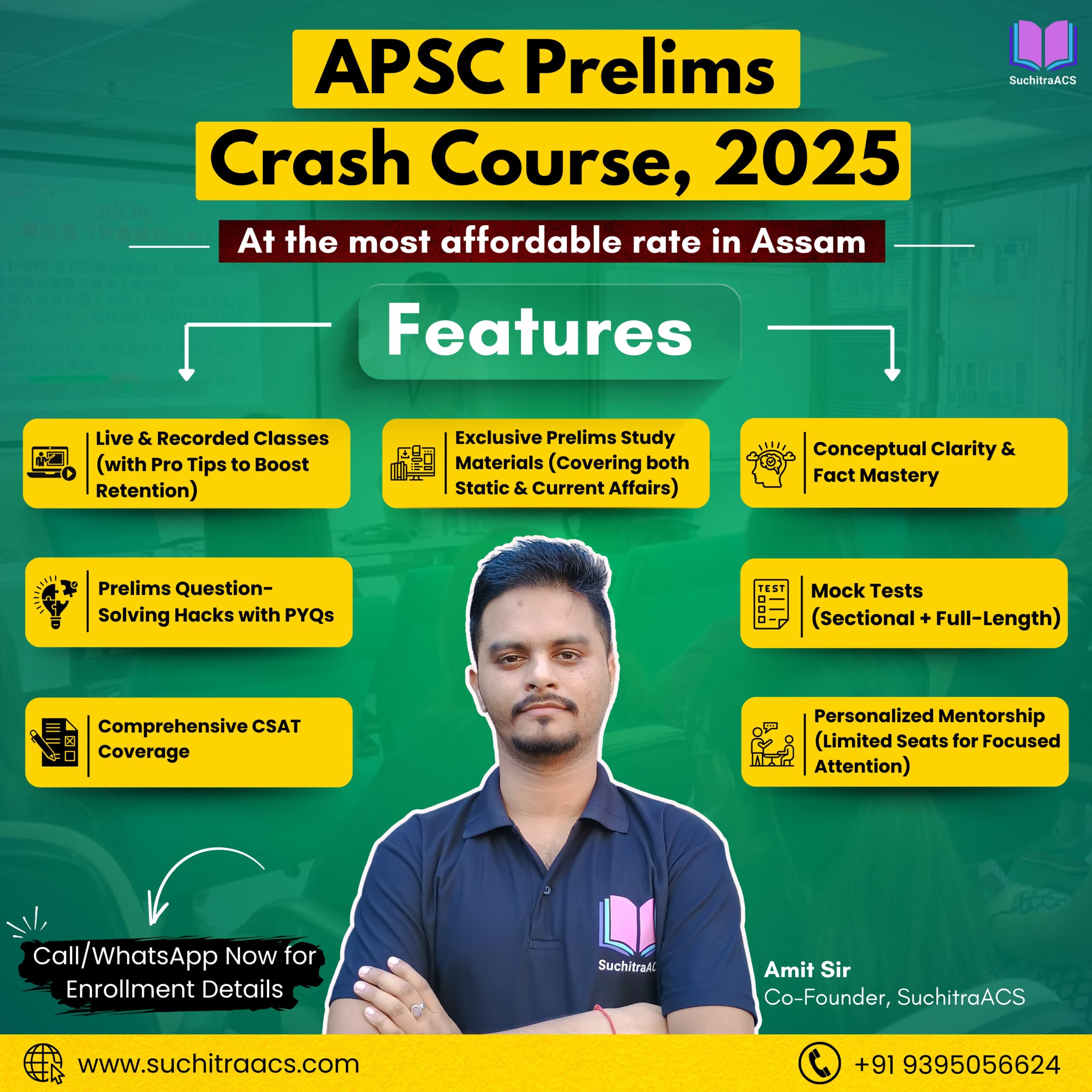
🔔 Join Our WhatsApp Study Group!
For exclusive access to premium quality content, including study materials, current affairs, MCQs, and model answers for APSC CCE and other Assam competitive exams.
Click here to join: SuchitraACS Study WhatsApp Group
📚 Want to know more about SuchitraACS’s most affordable courses?
Click here to know more: SuchitraACS Courses for APSC CCE and Assam Competitive Examinations

